Eclipse for Docker has arrived on Mars
Eclipse Mars has arrived, and with it comes a brand new Docker tooling for it.
Goals
We wanted to have a way to easily start/stop and deploy Docker containers directly from Eclipse.
We wanted something that would run on all three major platforms: Windows, Linux and OS X.
We wanted something that would work together with existing Docker command line tools, but also utilized provide better overview and easier/faster access to common operations, from a visual perspective.
We wanted it to be released with Eclipse Mars.
...and that is what we got now.
This article runs through how to get it installed, the main features and what the future plans are.
Where do I get it ?
With Eclipse Mars released, you can get it from the Eclipse Mars
updatesite, the feature is named
Docker Tooling
.
If you want to try the latest greatest builds you can use Linux Tools project nightly builds update site at http://download.eclipse.org/linuxtools/updates-docker-nightly/
To use the plugins, it is assumed that Docker is already installed. You can see Docker's Installation guide on how to do this on various platforms.
Views and Perspectives
Once you have installed the Docker tooling, you will get access to three new views:
Docker Explorer
a tree view listing all connected
Docker instances, with image and containers.
Docker Containers
a table view listing containers for
selected Docker connection.
Docker Images
a table view listing images available in
the selected Docker connection.
The easiest way to get to see these are by opening the Docker Tooling perspective.
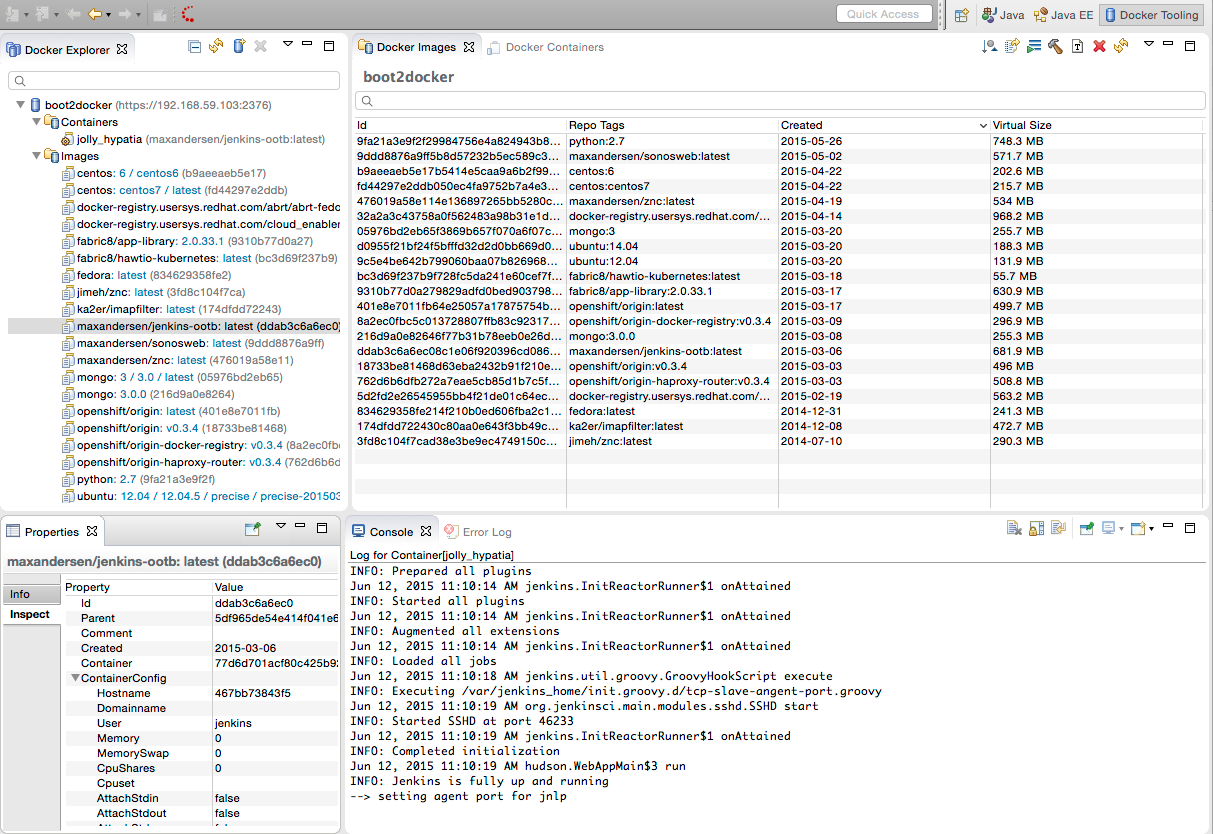
In the screen above, the Docker tooling are connected to a locally
running Docker deamon named
boot2docker
.
Connect
To configure this you click the
Add Connection...
button in the
Docker Explorer
view.
This will start a wizard that will try to detect your default Docker connection setup, dependent on your operating system.
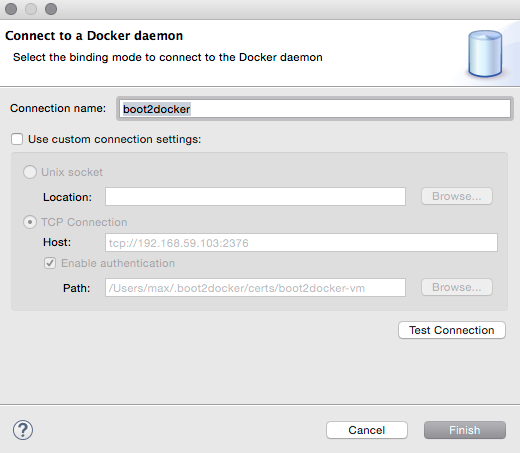
In Linux it will use standard unix sockets and if on Windows or
OSX, it will look for the following environment variables:
DOCKER_HOST
,
DOCKER_TLS_VERIFY
and
DOCKER_CERT_PATH
.
If neither of these are detectable, you can click
Use custom connection settings
and provide the connection info.
When you have the connection working you can get started using Docker images.
Pull individual images
To pull an image, you use the
Pull Image
in the Docker Image view.

Here, I'm simply pulling the jboss/wildfly image, a image amongst many available at http://hub.docker.com.
Run
To run the image, the easiest way is to right-click on the image in the Docker Explorer.
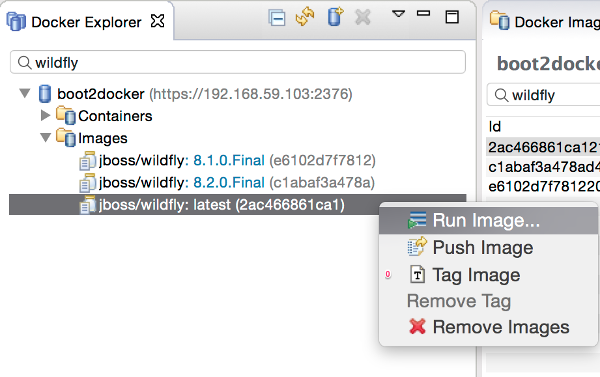
Here, I've initially filtered the list to just show images
matching
wildfly
and then using right-click to choose the
Run Image...
action.
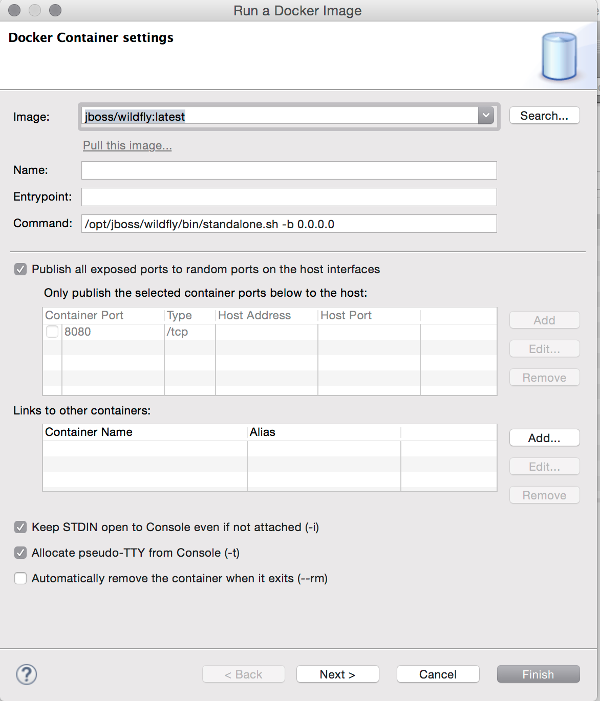
From within this dialog you can also search in Docker Hub for
other images by clicking
Search...
.
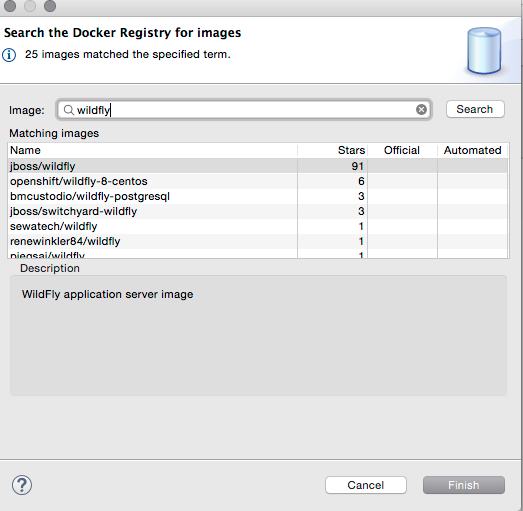
In this example, I'm only going to focus on running using the defaults, but in the Run Image wizard you can also configure ports, links, volumes, environment variables etc.
By default, we enable interactive and tty mode to allow you to interact with the docker container in the console (i.e. if the image asks for input).
When you click
Finish
, the container will start and show output in a Console and the
Docker Containers view will show which ports are used.
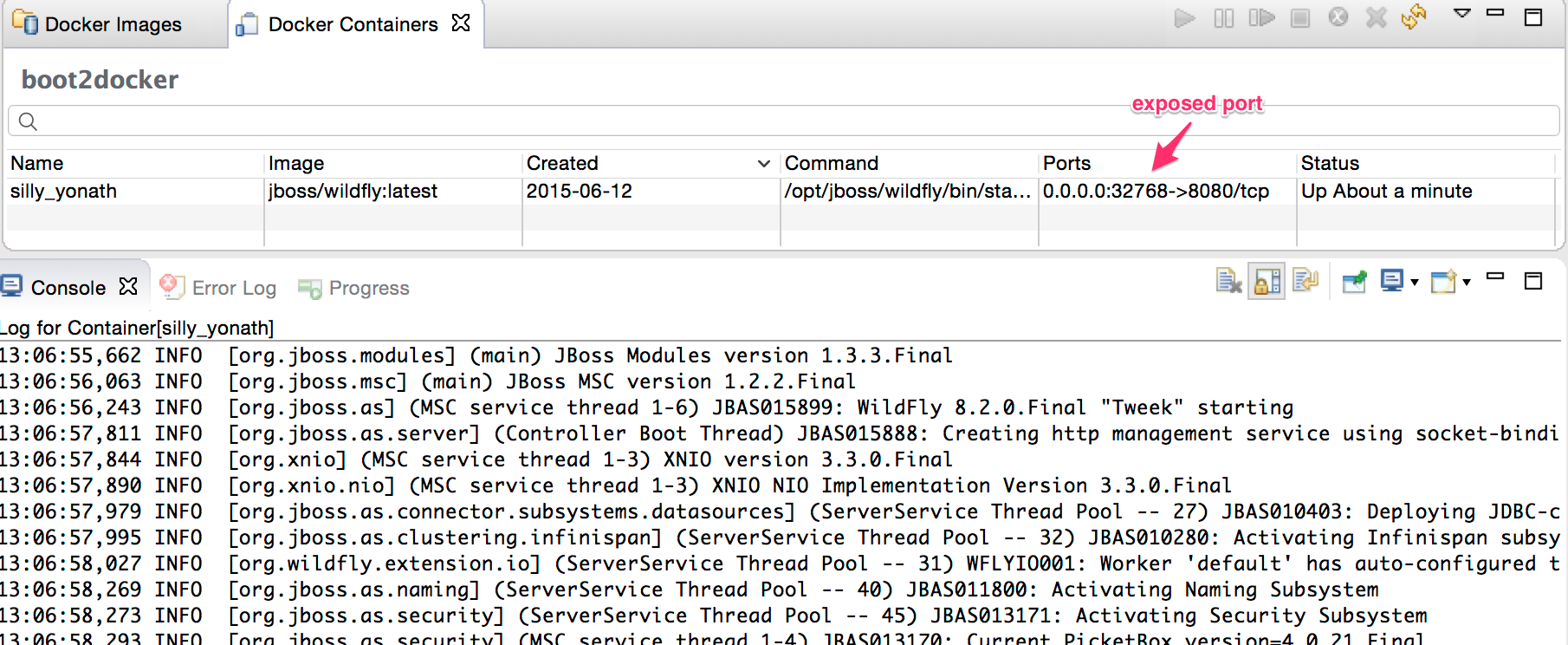
In here, the port at 8080 (the web server) is mapped to 32768 on the docker daemon.
To show this I just need to goto http://dockerhost:32768 to
access it.
dockerhost
is the IP of the docker daemon.
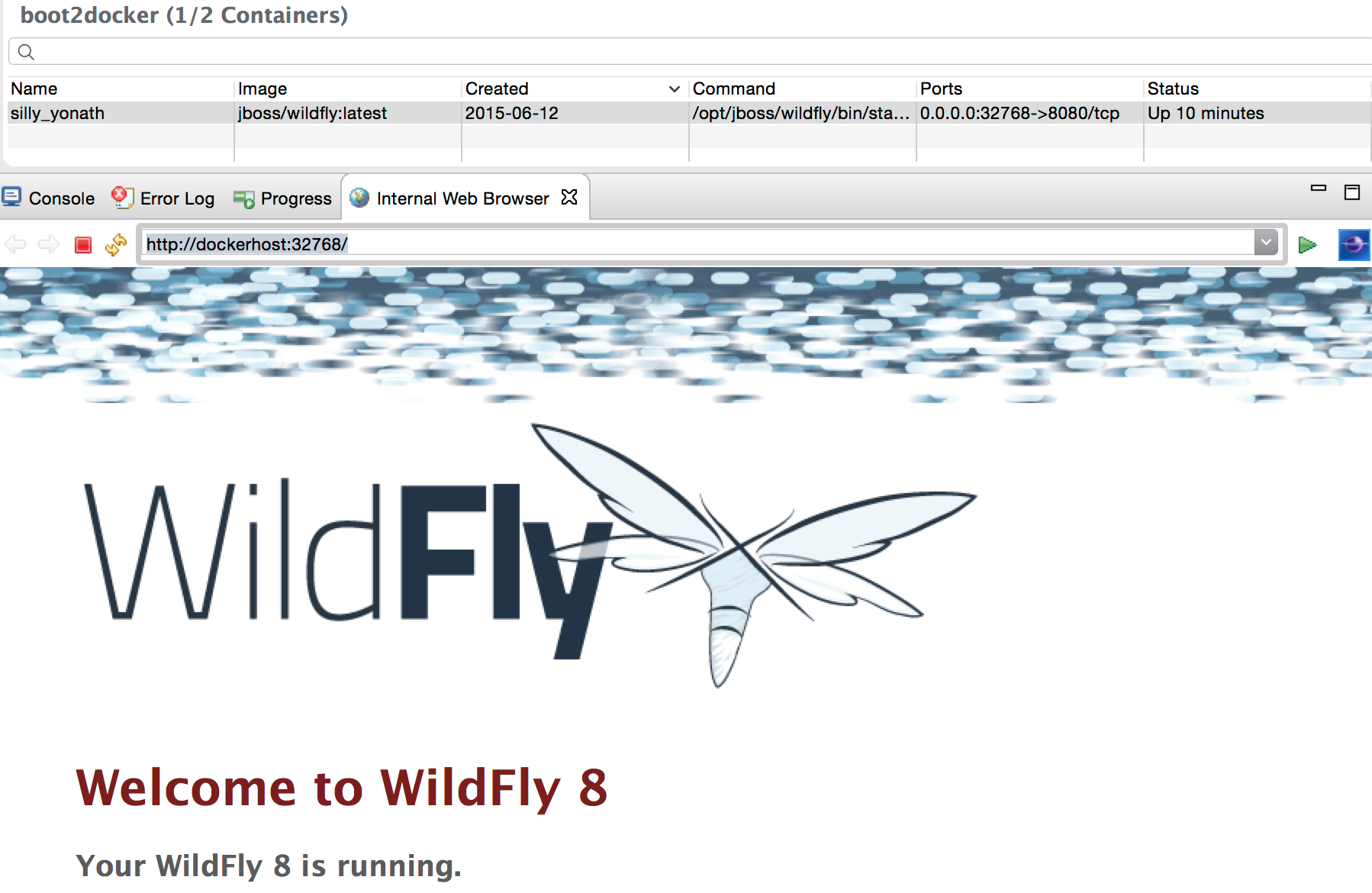
Build
If you have a
Dockerfile
you can build it via the
hammer
icon on the Image view. This will start the Build wizard.
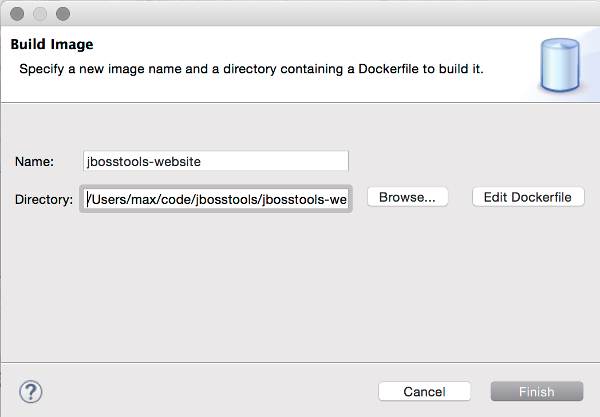
Once built, the image will show up and be possible to use for
running
.
Properties
You can view properties for all the various parts: connection, image and container, including getting a tree view of what docker inspect would show.
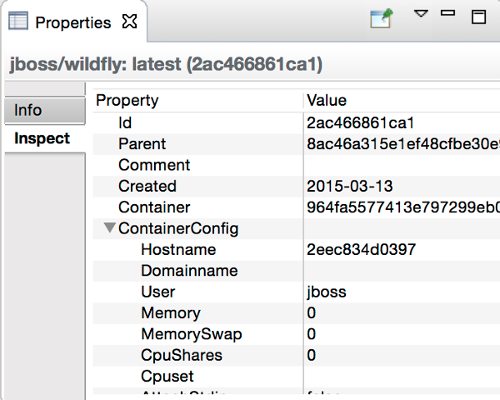
Future
For Eclipse Mars we added all of the above base features and you can use it in your day-to-day work with Docker.
For Eclipse Mars SR1, we will work on getting some of the rough edges fixed, like 'Run' and 'Build' should be available in the context menu and not only in the views menu.
Work also started in Eclipse CDT to support using Docker images to build binaries for an OS other than the one you are running on. The vision for this would allow running on Windows or Mac, but target native deployment on multiple various Linux architectures.
Furthermore in JBoss Tools we are working on better integrating Docker with Eclipse server adapters, to ease deployment of your web applications to a Docker container. You can see how server deployment works with the current Docker tooling by leveraging docker volumes and remote deployment support.
Feedback
I want to give a big thank you to Jeff Johnston, Roland Grunberg and Xavier Coulon for making the Docker Tooling happen so far. Now that we have the project in Linux Tools and part of Mars we are looking forward to bug reports and contributions from the Eclipse community.
If you have suggestions or find bugs, please open these in the Linux Tools project under Docker.
Have fun!
About the Authors

